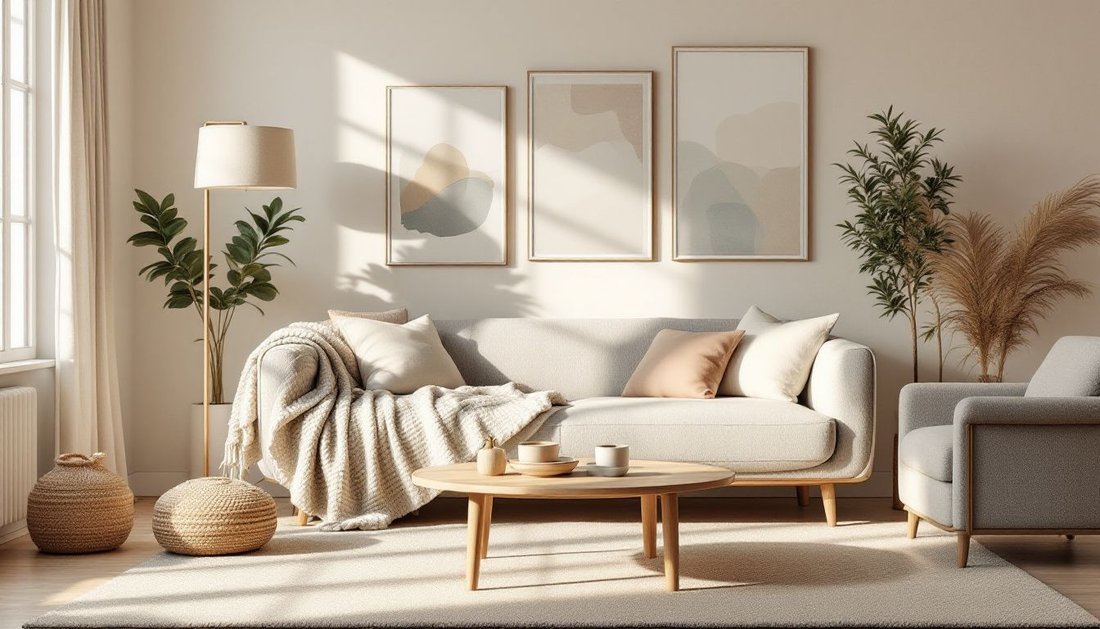Mastering the art of layering textiles in home decor can transform your living space into a stylish and welcoming home. This guide provides practical tips for combining fabrics, textures, and colors to add depth and personality to any room. Whether you want to refresh your living room, bedroom, or dining area, you’ll find actionable advice to help you achieve a sophisticated look.
Understanding the Importance of Layering Textiles

Layering textiles in home decor is more than just an aesthetic choice; it’s a powerful method to refresh spaces and add sophistication. Minor adjustments in layering can lead to remarkable changes. These changes can greatly enhance the sensory experience. The primary benefit of layering textiles is to elevate interior design and create a unique personal style, making a home feel lively with dimension, interest, and allure.
Combining different textures, colors, patterns, and materials creates visual depth, contrast, and texture in home decor. This method can transform a sterile space into a warm and welcoming home, making it more inviting and comfortable. The tactile experience provided by various textures also enhances the ambiance and comfort of living spaces, making textiles essential in interior design.
Mastering the art of layering textiles can turn your home into a stylish haven. Incorporating several layers of textiles adds depth and complexity, creating a sophisticated and curated feel that resonates with your personal style. Whether it’s through the layered look of rugs, pillows, or throws, each element contributes to a harmonious and visually appealing space.
Key Elements to Master Textile Layering
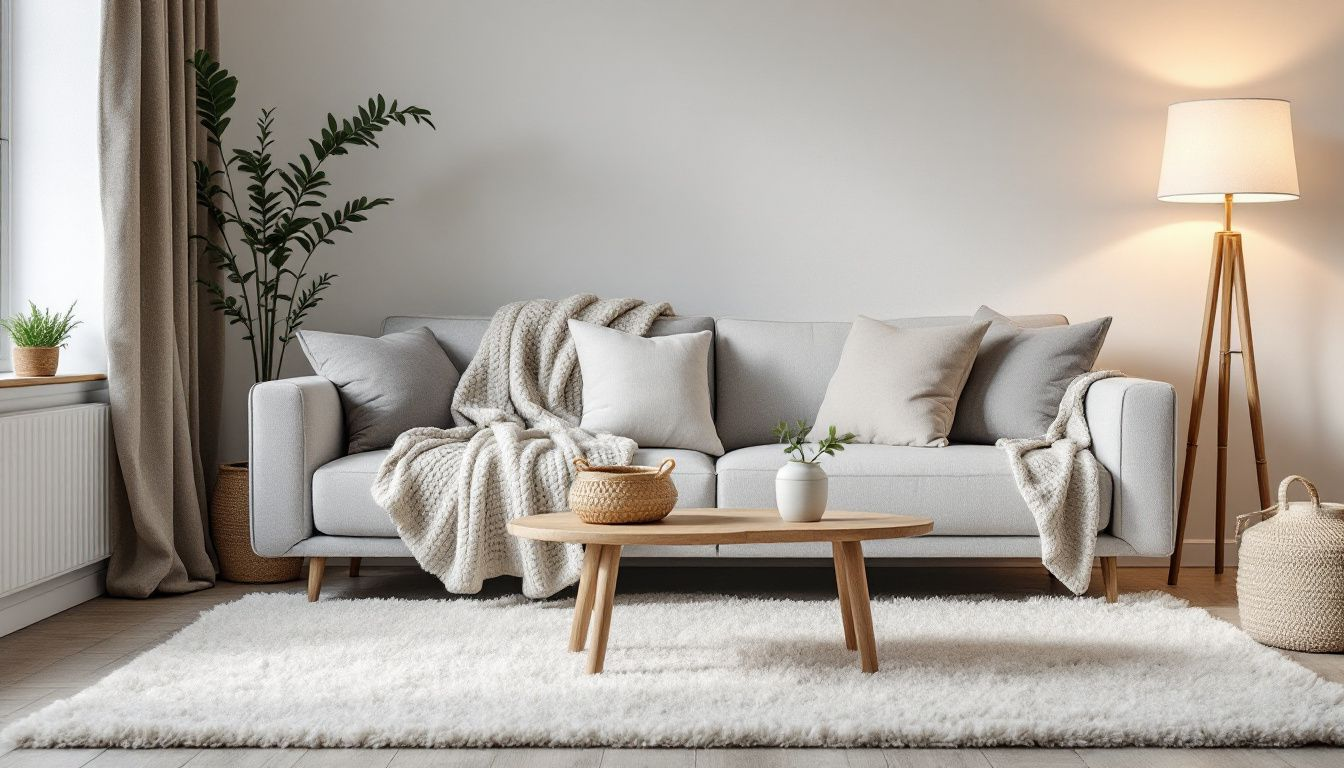
Achieving a beautifully layered look with textiles relies on understanding and mastering a few key elements, including natural elements: mixing patterns, matching textures, and using vibrant hues and muted tones. Each of these elements plays a crucial role in unifying various design components and creating a cohesive and visually appealing space.
Mixing Patterns for Visual Interest
Mixing patterns is a fundamental aspect of creating visual interest in interior design. Patterns add complexity and help highlight focal points, making the space more engaging. Achieve a balanced look by choosing a dominant pattern and layering smaller, subtler patterns around it. This prevents the design from feeling overwhelming while maintaining a cohesive look.
Combining simple and complex patterns can create a dynamic and visually appealing space. For instance, you can pair bold geometric designs with more delicate floral or polka dots patterns. This balance of patterns ensures that no single element overpowers the others, contributing to a harmonious overall aesthetic.
Solid colors among patterns enhance their visibility and provide a visual break. A neutral sofa can serve as an anchor, allowing patterned throw pillows and blankets to stand out. This technique ensures that your living space remains visually interesting without feeling chaotic.
Matching Textures for Tactile Interest
Textures play a crucial role in creating a space that invites touch and provides a tactile experience. Incorporating a mix of smooth, rough, and textured surfaces can enrich both the visual and tactile appeal of your decor. For example, combining fuzzy plush pillows with woven ridges and patterned embroidery can significantly enhance the tactile interest in a room and help to match textures.
Selecting a variety of textures, such as silky and woven fabrics, can create a more inviting and dynamic living space. After choosing a color palette, layer various textures through fabrics, furnishings, and decor items. Mixing textures adds depth and contrast, creating a warmer and more comfortable atmosphere.
Using Vibrant Hues and Muted Tones
Combining vibrant hues with muted tones can create a visually stimulating and coordinated look that enhances the overall aesthetic of a space. This creates a cohesive and visually pleasing palette, making the design feel both dynamic and balanced. For example, vibrant throw pillows on a muted sofa can create a striking contrast that draws the eye without feeling overwhelming.
Using a mix of bold and subdued colors can also create depth and cohesion in your decor. This technique ensures that the space remains visually interesting while maintaining a curated feel. Carefully selecting and layering colors is essential for creating depth in a rich and harmonious environment that reflects your personal style.
Layering Textiles by Room
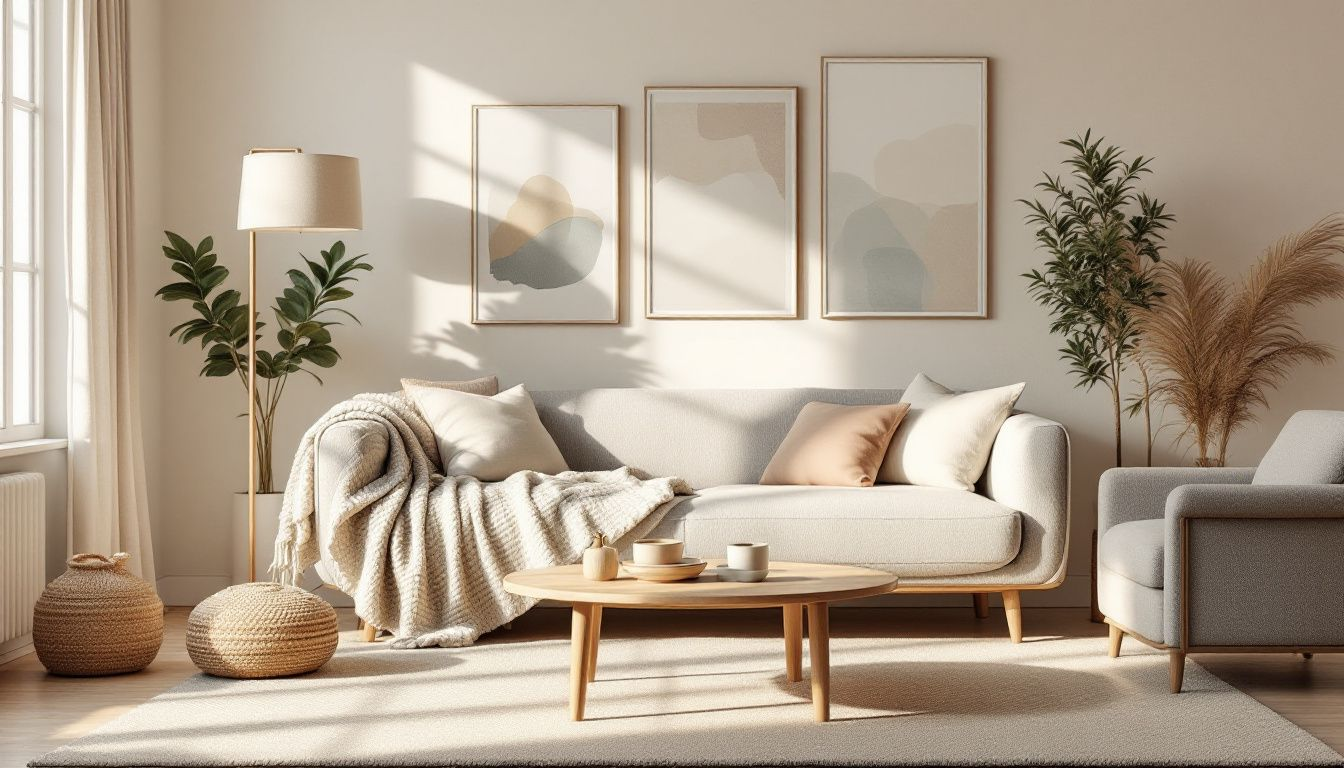
Layering textiles can transform different rooms in your home, each with its unique requirements and opportunities. Whether it’s the living room, bedroom, or dining area, incorporating varied textiles can significantly enhance the warmth, comfort, and visual appeal of each space.
Living Room Textiles
The living room is a central gathering space, making it ideal for showcasing the art of layering textiles. Incorporating throw pillows, a chunky knit throw, and lighter fabrics can enhance the cozy living room ambiance of the room. Grouping pillows, throws, and blankets in varied shapes and sizes creates a dynamic and inviting environment.
Using rich and vibrant colors in textiles can also draw attention and create warmth, making the living room feel more inviting. A plush velvet throw draped over a leather chair adds a touch of luxury and comfort, transforming the living space into a stylish and welcoming haven.
Bedroom Textiles
The bedroom is a sanctuary for rest and relaxation, and layering textiles can create a serene and inviting atmosphere. Using multiple layers of bedding in soft, muted colors can instill a sense of warmth and relaxation. Soft, neutral colors in bedding can create a calming environment, making the bedroom feel more inviting and comfortable.
A mix of bedding layers such as duvets, quilts, and shams enhances both comfort and aesthetic appeal. These layers add visual interest and provide a tactile experience that invites relaxation and restfulness.
Dining Area Textiles
The dining area is another space where textile layering can elevate the overall experience. Incorporating luxurious fabrics and unique patterns can create an elegant atmosphere for special occasions. Bold patterns and rich textures add a touch of sophistication and elevate the dining experience.
For everyday dining, simple yet stylish textiles help maintain a clean and welcoming atmosphere. Balancing rich fabrics for special events with simpler textiles for daily use creates a cohesive dining environment that feels refined and comfortable.
Enhancing Decor with Layered Lighting
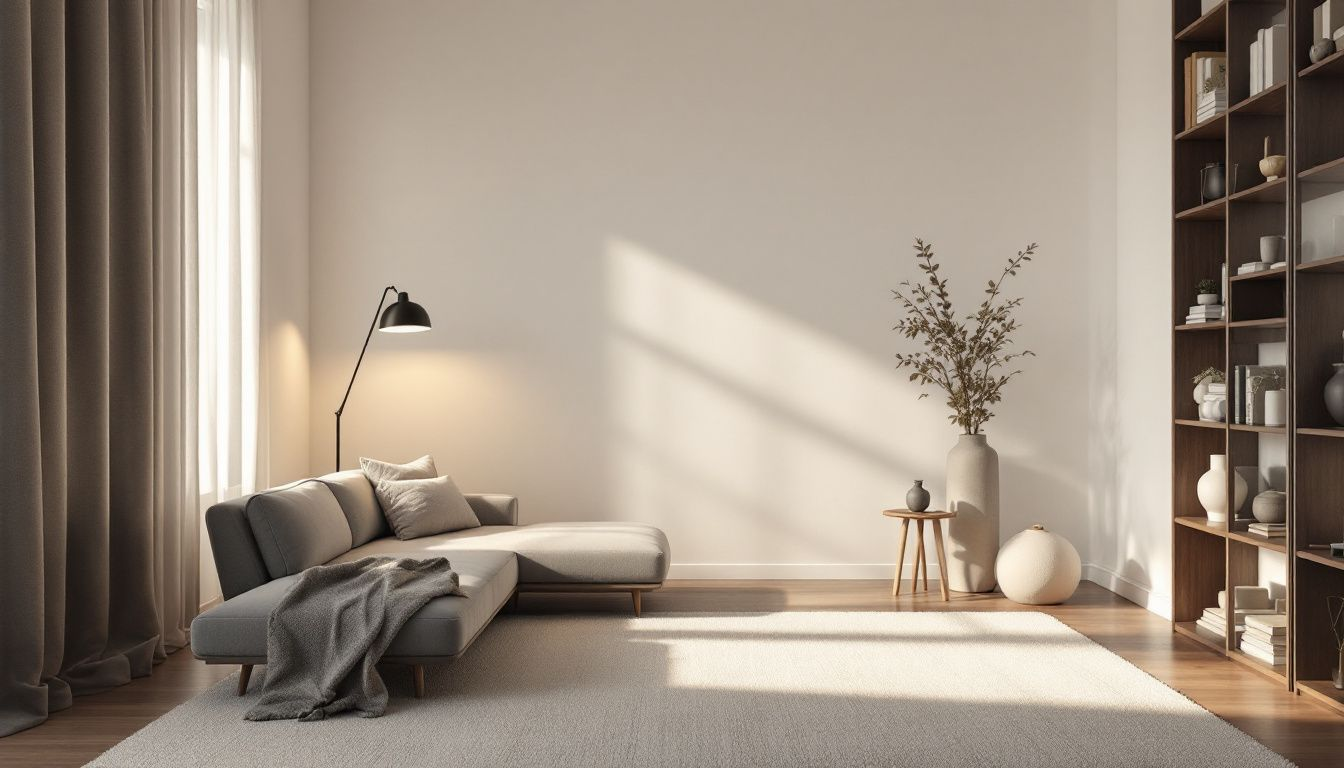
Layered lighting is another crucial element in creating a well-rounded interior design. Combining ambient, task, and accent lighting sets the tone, transforms the space, and curates the ambiance, making the room feel inviting and cohesive. Each lighting layer serves specific visual objectives, contributing to a balanced aesthetic throughout the space.
Placing vibrant colors against muted tones draws attention to specific areas and creates balance in the decor elements. The decorative layer adds style and charm while the focal layer highlights prominent features and enhances the visual appeal of artwork and architectural details.
Personalizing Your Space with Textiles
Textiles play a significant role in personalizing your living space. Choosing materials with unique patterns, colors, and textures significantly enhances your personal style and creates a space that reflects your personality. Incorporating complementary textiles such as throw pillows, blankets, and rugs further personalizes the space, adding depth and visual appeal.
Layering textiles creates a rich, inviting space that feels truly unique. Whether you prefer bold, vibrant hues or soft, muted tones, the textiles you choose can transform your home into a stylish and comfortable haven that reflects your individual taste and flair.
Expert Tips for Effective Textile Layering
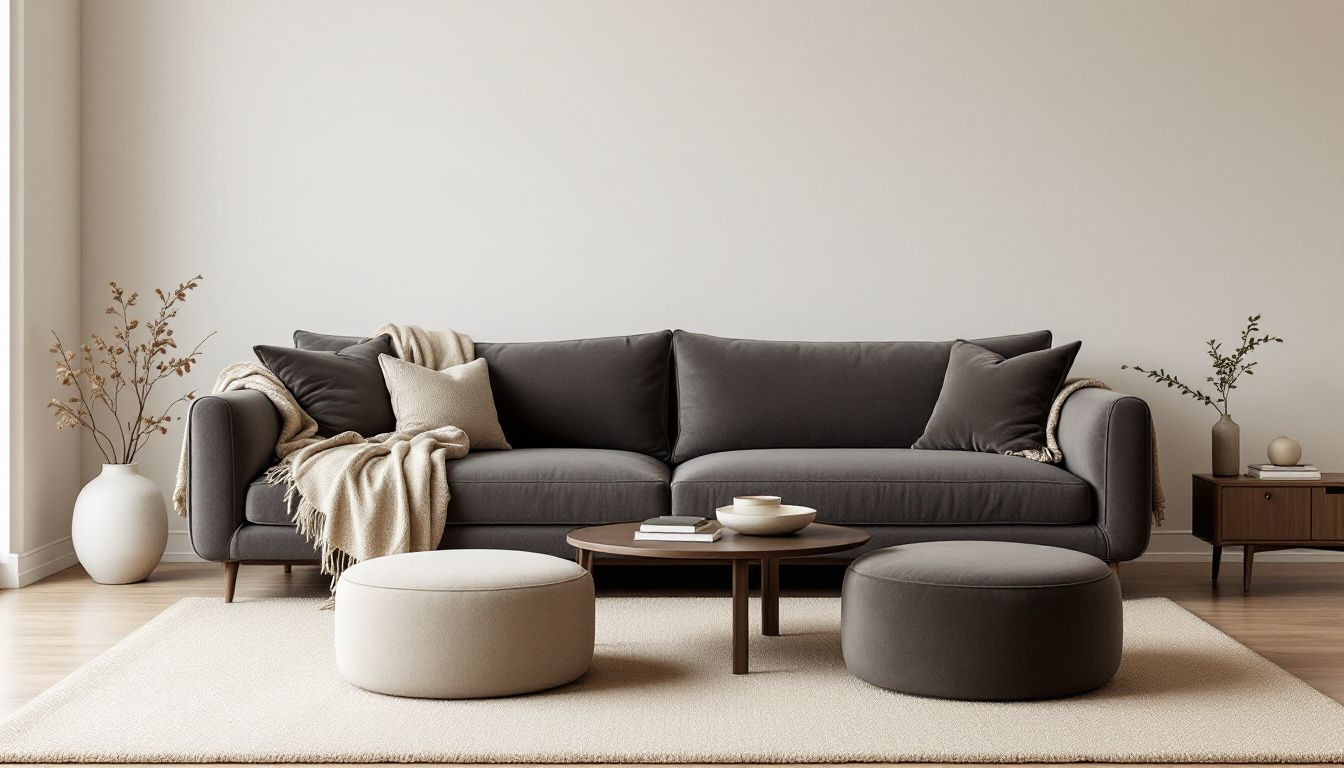
Mastering the art of textile layering involves a few expert tips. Choosing a cohesive color palette is foundational to creating a harmonious and visually appealing design. This ensures that all the different elements work together seamlessly, creating a unified look.
Using fabric samples allows experimentation with different patterns and textures before making a final decision. This hands-on approach ensures that the chosen textiles complement each other effectively, resulting in a well-curated and stylish space.
Choose Bari Decor for Unique and Sustainable Home Decor
Bari Decor is your go-to destination for modern and sustainable home decor solutions. With a focus on innovation and quality, we offer a carefully curated selection of top-quality exterior and interior doors, including swing, pocket, barn, bypass, and bi-fold options.
Our mission is to beautify your spaces while also protecting the planet by sourcing and creating products made with environmentally friendly materials and processes. Bari Decor has grown into a thriving community of like-minded individuals who appreciate beauty, innovation, and sustainability.
Join us on this exciting journey and let's make your home a sanctuary of beauty and sustainability together. Follow us on social media, subscribe to our newsletter, and keep an eye on our blog for the latest trends, tips, and Bari Decor exclusives. Choose Bari Decor for a unique and sustainable home decor experience that reflects your personality and values.
Frequently Asked Questions
What is the art of layering in interior design?
Layering in interior design is about creating a harmonious and multi-dimensional space by combining colors, textures, and patterns that complement each other. Embrace this art to transform your room into a cohesive and inviting environment!
Why is layering textiles important in home decor?
Layering textiles is crucial for creating an inviting and comfortable atmosphere in your home. It brings depth and visual interest that elevate your decor to the next level!
How do I mix patterns without overwhelming the space?
To mix patterns effectively, select a dominant pattern and complement it with smaller, subtler ones while incorporating solid colors for balance. This approach creates an exciting yet harmonious space!
What types of textures should I use to create a tactile experience?
To create a delightful tactile experience, use a combination of smooth, rough, and textured surfaces like fuzzy plush and woven ridges. This variety will engage the senses and make your space truly inviting!
How can I use vibrant hues and muted tones together effectively?
To effectively use vibrant hues with muted tones, aim for a balanced arrangement where the vibrant colors pop against the more subdued shades, creating an eye-catching yet harmonious look. Remember, the key is moderation—let the muted tones ground the vibrancy for a stunning effect!
Conclusion
Textile layering is a versatile and effective way to enhance your living spaces. From creating a tactile experience to personalizing your home, textiles add depth, warmth, and visual interest that transform any room into a haven of beauty and comfort.
With expert tips, creative ideas, and unique designs from Bari Decor, you can master the art of textile layering and elevate your home decor game. So why wait? Start experimenting with textures, colors, and patterns today for a truly one-of-a-kind space!

